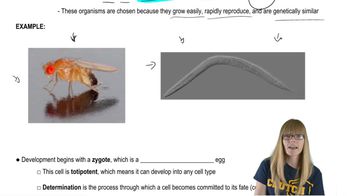Here are the essential concepts you must grasp in order to answer the question correctly.
Threshold Traits
Threshold traits are characteristics that exhibit a discrete phenotypic outcome, typically categorized into two or more classes, such as 'normal' and 'affected.' These traits are influenced by multiple genetic and environmental factors, meaning that an individual must reach a certain genetic threshold for the trait to manifest. This concept is crucial for understanding how complex traits can appear simple while being governed by underlying polygenic inheritance.
Recommended video:
Polygenic Inheritance
Polygenic inheritance refers to the phenomenon where multiple genes contribute to a single trait, resulting in a continuous range of phenotypes. In the case of threshold traits, even if only two phenotypic classes are observed, the underlying genetic architecture can involve many alleles across different loci. This complexity allows for variations in the expression of the trait, which can lead to the discrete classes seen in the phenotype.
Recommended video:
Genetic Threshold Model
The genetic threshold model posits that for a threshold trait to be expressed, an individual must possess a certain cumulative genetic liability that surpasses a specific threshold. This model explains why traits can appear to have discrete categories despite being influenced by many genes. It highlights the interaction between genetic predisposition and environmental factors, emphasizing that the expression of the trait is not solely determined by a single gene but rather by the combined effects of multiple genetic contributions.
Recommended video:
 Verified step by step guidance
Verified step by step guidance Verified video answer for a similar problem:
Verified video answer for a similar problem:

